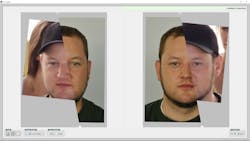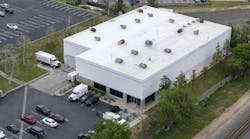Depending on the situation, it isn’t always easy to identify a body even with a photo ID. Most of us have had at least one scene, where the decedent was literally unrecognizable. Though dental records provide a solid route to finding out identity, there are instances when that is not an option. It can take hours to sift through social media or in house police records trying to find a match. However, it is still our duty to find out who that person was for their family members. For these times when it is difficult, some of the latest biometric technology can help.
Picture this...
You’re at a homicide scene where there is no identification, no witnesses and no one saw the victim within the last 72 hours or longer. They can’t tell you who they are verbally, so what steps can you take in order to figure out the identity of the victim? One way to track down leads would be to find whomever the victim is associated with and start building a relational network of potential leads or suspects. Death Investigation can be tricky enough and more challenging when you encounter a decedent who is unrecognizable. Face Forensics has come out with a unique form of facial recognition called CorpseID. Taking the traditional facial recognition and enhancing its abilities, this software works in a unique way that is able to identify an individual no matter what the condition of their body may be.
Since it is designed specifically to identify deceased or unconscious bodies, it is able to recognize certain facial features even if the decedent’s eyes are closed or the face is damaged or badly decomposed. Other facial recognition systems use algorithms that are centered on the eye itself. Instead, CorpseID utilizes f2 AI which takes into consideration other areas or points of origin on the face. When f2 was initially designed, it included the ability to match a portion or selected part of a face. This was accomplished by applying different weightings to different areas of the face. The f2 system takes other areas of the face and is able to utilize this technology in different capacities including living and dead individuals. In the past, facial recognition has been limited to identifying the living. The f2 is able to work off of bodies with eyes, without eyes, or even with closed eyelids.
The f2 software has a default database where users can add photos for comparison. It has been designed so that it is able to connect with other existing databases that contain face and/or tattoos as well. These other databases may be anywhere on a network and once they are accessed, it is in read-only mode and under appropriate access controls which gives the software added security. The system is capable of using an image of a mere section of a face to help identify the person. An example of this is the area around the eyes or one side of the face. The image and information collected from this are then compared to images of entire faces that have been previously inputted.
However, for those situations when a face is completely unrecognizable, meaning there is no area of the face that may be used for recognition due to injury or decomposition, Face Forensics has a tattoo recognition software that may help if the person has tattoos. The tattoo recognition software may be used by itself or along with CorpseID. Tattoos tend to be more challenging to compare, but with the right software, it is possible to ID a victim by their ink. This works very similarly to facial recognition software by comparing tattoos to a database.
Advancements in biometrics and other facial recognition systems
Biometrics often hold the key to correctly identifying an individual. Because of this fact, other forms of biometrics have made advancements in recent years. Many of these may be used out in the field such as on a traffic stop. For example, fingerprint scanners are now able to search databases in minutes (or even seconds) to ID a driver. Not only does this allow officers to quickly ID a subject, but it provides an element of safety since the officer can ID the driver right away-even without any form of identification such as a driver’s license—then they can relay that subject’s info to dispatch to obtain officer-safety related information on the individual.
Bayometric has been supplying law enforcement agencies and other entities with biometric identification devices worldwide. Though they have developed numerous devices that assist law enforcement both in the field as and police headquarters, they are most known for their fingerprint readers. This includes a “Touch N Go” feature that uploads fingerprint information but within four lines of code to keep the information secure and confidential.
Crime scene investigators and detectives in particular, can utilize portable scanners because it allows investigators to potentially identify victims, suspects, witnesses, or persons of interest on the spot. Likewise, facial recognition software of any kind can assist in all types of investigation. Go back to the original scenario in this article: if the death scene, with the unidentified victim, is determined to be suspicious and happened in an area within the visual range of video surveillance, facial recognition could be used on video clips, or still photos could help identify suspects. It could also help detectives figure out who the victim is by interviewing anyone who may have been on camera in that vicinity since they may have interacted with the victim.
Cognitec has taken traditional facial recognition to the next level. Elke Oberg, spokesperson of Cognitec, says their software allows the user to set a threshold that determines how many match candidates are shown, based on a scoring system between 0 to 1. “Below .3 means there is no possibility of a match,” says Oberg. “Above 0.7 means there is a higher probability.” The system works very much like a latent print software system in that once a photo or screenshot from a video clip is entered into Cognitec’s system, it will narrow down the search and present possible matches from known candidates in a database. Oberg says, the higher the quality of the photo of the individual, the more probability of obtaining a match.
Though the use of facial recognition technology has been the source of some controversy lately, it has been helpful for investigations of all types-even cold cases. In some countries, the use of facial recognition has been shown to decrease crime. As the technology continues to develop, it will become ever more integrated into the investigative process.
The ability to identify a decedent or a live suspect on the spot is a huge asset to investigation. Biometric device capabilities are improving and increasing in what they can do all the time. Not only does it allow investigators to contact family of the decedent more quickly, it also provides leads to detectives in the event of a suspicious death. Simply by knowing the identity of an individual, detectives have overcome half the battle.







